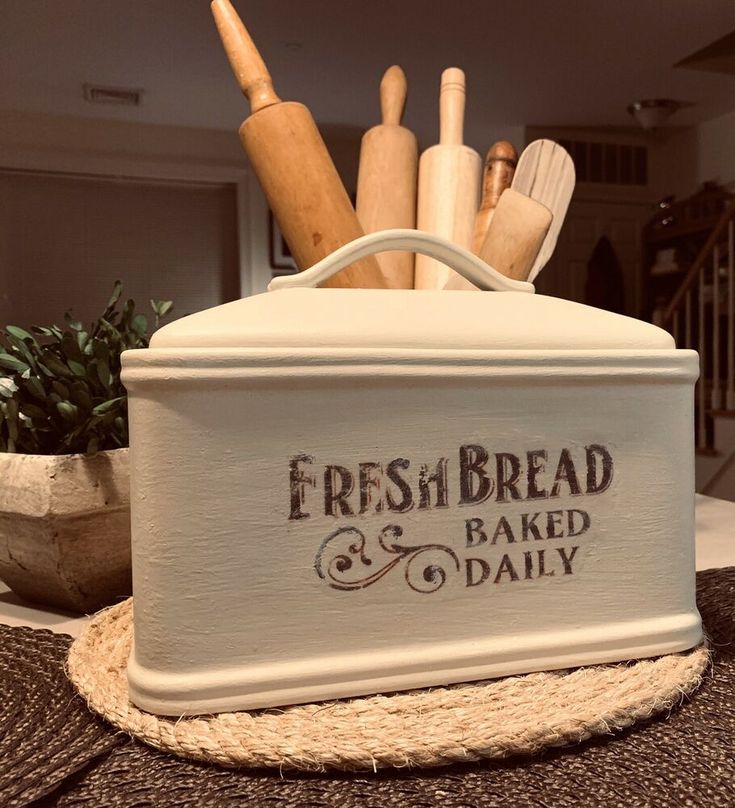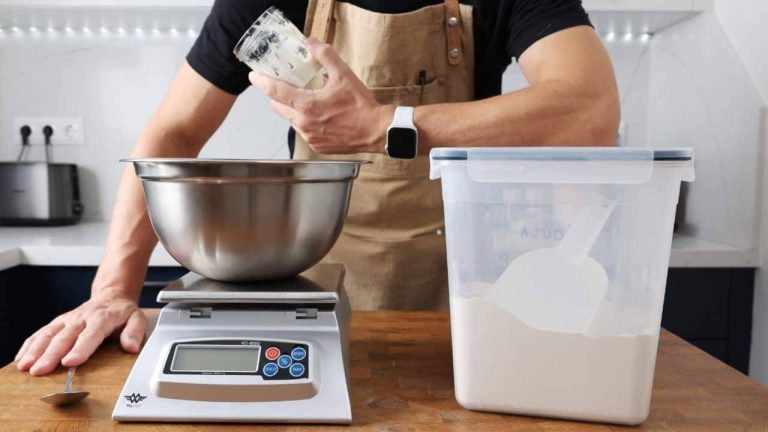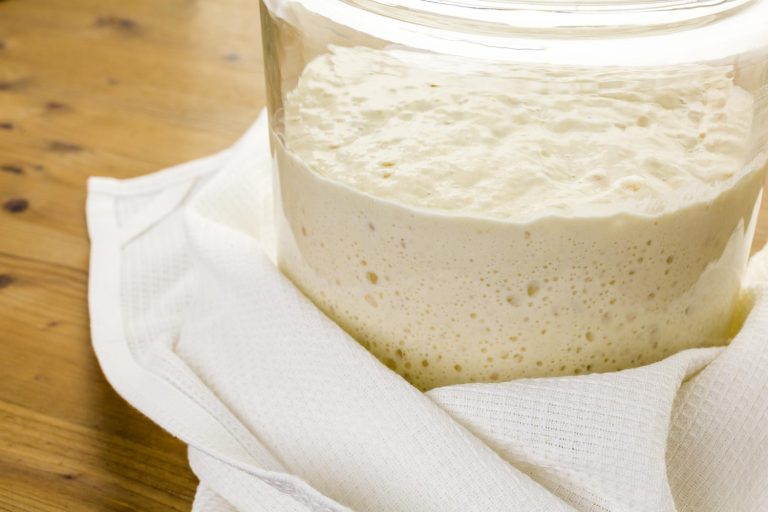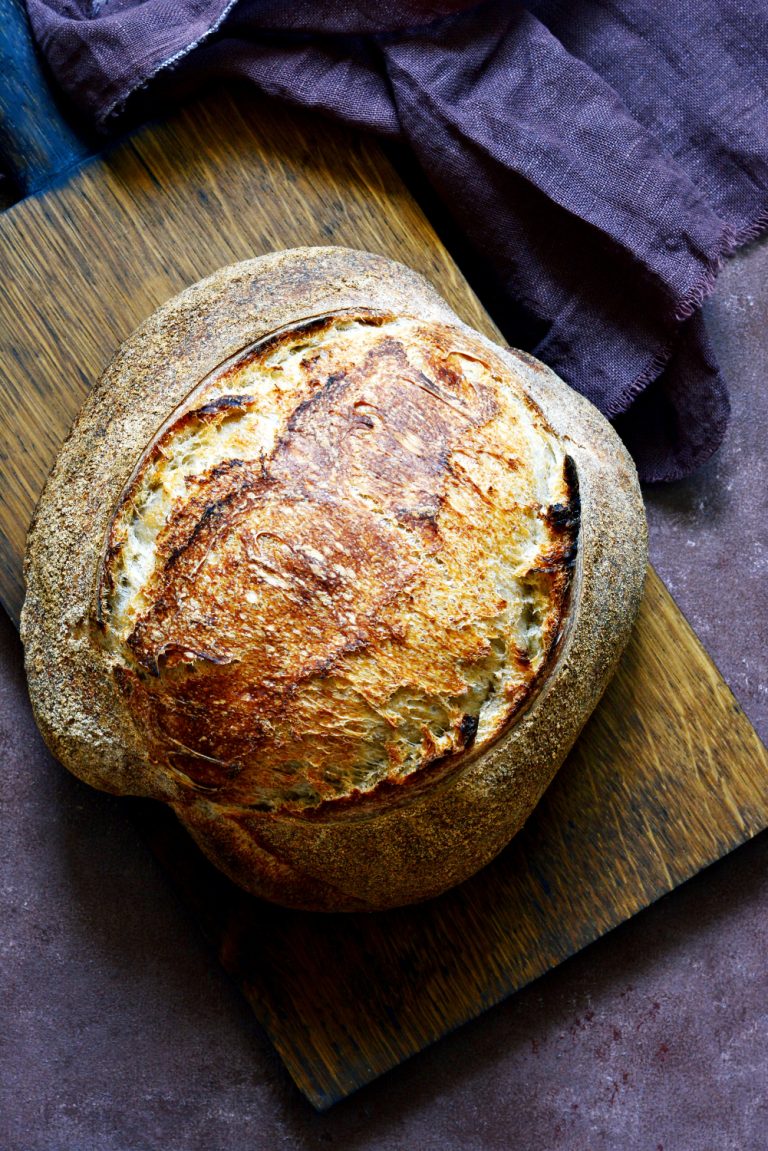How to Choose the Best Bread Box for Sourdough Starter Maintenance
A healthy sourdough starter needs proper storage conditions and regular care. Your bread box’s quality significantly creates an ideal environment that helps bakers achieve better fermentation results and consistent bread quality. The proper storage solution protects your starter from temperature changes and maintains optimal humidity.
You need the right tools and supplies to bake successful sourdough bread. This piece explains everything about picking the perfect bread box, from material choices to ventilation needs and size options. You’ll discover different bread box types, storage techniques, and alternative ways to keep your sourdough starter healthy and active.
Factors to Consider When Choosing a Bread Box
The perfect bread box for sourdough starter maintenance depends on specific features that affect fermentation results. A suitable container helps maintain starter health and makes daily feeding routines easier.
Material
Your choice of material significantly affects starter maintenance. Glass lets you see the fermentation process clearly and won’t hold onto smells or tastes. Ceramics keep the temperature steady and provide excellent insulation that helps maintain consistent fermentation conditions. Stainless steel lasts long but might react with acidic starters without proper coating. Plastic containers are lightweight and budget-friendly, but they tend to keep odors and break down as time passes.
Size and Capacity
Your bread box size should match your starter quantity and feeding schedule. These volume guidelines will help you choose:
- Small (1/5 liter): Works well for 55-70g starter maintenance
- Medium (1/2 liter): Fits 70-150g starter or levain perfectly
- Large (3/4 liter): Handles 150-250g starter with ease
- Extra Large (1 liter): Accommodates large batches exceeding 250g
Ventilation
Good air circulation plays a significant role in healthy fermentation. The bread box design should promote airflow and protect against contamination. The box’s lid should include small ventilation holes or remain non-airtight to manage humidity levels and prevent fermentation gasses from building excess pressure. A loose-fitting lid works better than an airtight seal.
Ease of Cleaning
Regular maintenance will help your starter stay in good health and prevent contamination. A perfect bread box needs:
- Straight sides that you can scrape easily
- Few corners or crevices where the starter might stick
- Materials safe for dishwasher (if possible)
- Smooth interior that resists buildup
A container with tapered sides lets you remove starter residue when feeding time comes. Some models have parts you can take apart to clean better, while others come in one piece to reduce spots where dried starter might collect.
Top Bread Box Options for Sourdough Starters
Storage materials for sourdough starters have different advantages. Each material’s distinct characteristics affect how you maintain and ferment your starter. Let me give you a complete overview of the best bread box materials.
Ceramic Bread Boxes
Ceramic boxes keep your bread at the right temperature and moisture levels, creating perfect fermentation conditions. The box’s thick walls are natural insulation and protect starters from temperature changes. These boxes come with several great features:
- Natural humidity regulation
- Excellent temperature stability
- Easy-to-clean surfaces
- Attractive esthetic appeal
The boxes look beautiful and work great, but you must handle them carefully. If dropped, they can crack or break.
Wooden Bread Boxes
Wooden containers, especially those crafted from olivewood, are great for functionality and aesthetic appeal. These boxes regulate humidity naturally and provide adequate ventilation to develop healthy starters. Natural wood creates a breathable space that prevents excess moisture buildup and maintains perfect conditions for fermentation.
Stainless Steel Bread Boxes
Stainless steel bread boxes offer practical benefits when you store sourdough starter. Their durable construction makes them perfect for everyday use. The smooth surfaces aid quick cleanup, and many models come with roll-top designs that provide easy access with proper airflow. These boxes can help maintain steady temperatures because of their reflective properties, though they might dent easily.
Glass Bread Boxes
Glass containers provide exceptional visibility that lets you monitor your starter’s activity and fermentation progress. Their non-porous surface prevents odor absorption and makes cleaning easy. These boxes work great when you need to watch bubble formation and starter rise, which helps bakers track how well fermentation develops. Though heavier than other options, glass containers’ transparency makes them perfect for maintaining multiple starters or experimenting with different flour combinations.
How to Use a Bread Box for Sourdough Starter Maintenance
Proper environmental conditions in your bread box will help a sourdough starter develop healthily. Regular monitoring and optimization of these conditions help achieve consistent fermentation.
Proper Storage Techniques
Your sourdough starter’s success depends on the bread box’s location and cleanliness. The box should avoid direct sunlight and heat sources to avoid temperature changes. You should also clean the container really well between feedings. This prevents contamination and creates ideal conditions for fermentation.
Your starter needs:
- A lid that stays slightly open for air to flow
- A spot away from heat-producing kitchen appliances
- Clean box surfaces
- Regular feeding times
Temperature Control
Proper temperature management plays a significant role in starter development. The ideal temperature range depends on your desired fermentation speed and feeding schedule:
| Temperature | Feeding Schedule | Seed Ratio |
|---|---|---|
| 45°F/7°C | 5 days | 1:4:4 |
| 50°F/10°C | 3 days | 1:4:4 |
| 68°F/20°C | 1 day | 1:4:4 |
The best results come from maintaining temperatures between 68-78°F (20-26°C) during active feeding periods. Your starter’s fermentation slows down at lower temperatures, while higher temperatures can encourage unwanted bacterial growth.
Humidity Management
Your starter needs proper moisture control to avoid excessive dryness or wetness. The bread box works best when relative humidity stays between 60-80% during fermentation. A small container of water near the bread box (not inside) helps maintain suitable humidity levels when the climate gets dry or during winter.
The starter’s consistency requires daily monitoring to maintain its predictable texture throughout fermentation—excess condensation on the box’s interior signals a need to adjust the lid position for better ventilation. The starter might develop a dry surface layer, so you might need to reduce airflow or add moisture to the surrounding area.
Alternative Storage Solutions for Sourdough Starters
Bread boxes are a great way to get storage solutions, but bakers often look at different options to store their sourdough starters. These alternatives have unique benefits, especially when you have specific conditions or environments.
Mason Jars
Mason jars are popular and affordable containers that work great for storing sourdough starters. These containers are available in multiple sizes and match different starter quantities perfectly. Critical advantages of mason jars make them stand out:
- You can easily watch the fermentation through the clear glass
- They clean up nicely in the dishwasher
- Most stores stock them at reasonable prices
- The glass construction lasts for years
Your starter quantity determines the perfect mason jar size:
| Jar Size | Starter Amount | Usage |
|---|---|---|
| 16 oz | 50-100g | Small batch |
| 32 oz | 100-200g | Standard batch |
| 64 oz | 200-300g | Large batch |
Proofing Boxes
Proofing boxes control temperature with precision and create perfect fermentation conditions. These specialized containers help maintain steady temperatures, especially in cold or winter climates. A DIY proofing box needs these items:
- An insulated container or old microwave
- A heating element (40-50 watts)
- A temperature controller
- Simple wiring components
Commercial proofing boxes include advanced features but cost more. These boxes maintain temperatures between 70-85°F (21-29°C), which creates ideal conditions for starter development.
Dedicated Starter Containers
Specialized sourdough starter containers come with design elements that help manage fermentation effectively. These containers showcase graduated markings to measure starter growth and special lids that maintain proper air exchange without risking contamination.
Modern dedicated containers offer several advanced features:
- Double-wall construction maintains temperature stability
- Integrated temperature strips show precise readings
- Ergonomic design makes feeding simple
- Non-reactive materials stay safe with acidic starters
The material’s durability and cleaning convenience should guide your container selection. Food-grade plastic or specialized glass containers deliver reliable performance and protect starter health. Many models feature removable parts to give you a full picture during cleaning, while others showcase a seamless build that stops starters from collecting in tight spaces.
Conclusion
Your sourdough starter’s success relies on proper storage conditions and your ability to consider environmental factors. The right materials, container size, and ventilation capabilities determine optimal fermentation conditions. These basics and temperature and humidity control build a foundation for healthy starter development that leads to better baking results.
Bright bakers match their storage solutions to their specific baking schedules and environments. You can pick the best bread box for sourdough or learn about other options like mason jars and proofing boxes. The key to exceptional sourdough bread lies in choosing storage that fits your needs and following good maintenance practices. This approach will give you consistent fermentation and outstanding results.
| Elevate your bread and pizza game with an authentic artisanal sourdough starter from The Yeast We Can Do. Whether you’re a passionate home baker or a restaurant owner looking to add the unmistakable flavor and character of true sourdough to your menu, our small-batch starter will help you create exceptional bread and pizza with that perfect tangy flavor and signature crust. Transform your baking today. Email john@theyeastwecando.com to get your hands on our premium sourdough starter. |
FAQs
What is the ideal type of container for storing a sourdough starter?
Glass containers are optimal for sourdough starters due to their non-reactive nature, ease of cleaning, and transparency, which allows for easy monitoring of the starter’s growth. Ensure the container is sufficiently large to accommodate the starter’s expansion to two or three times its size during feeding periods without spilling over.
How frequently should the container for a sourdough starter be replaced?
The frequency of changing your sourdough starter container depends on your feeding schedule. For daily feedings, it’s advisable to switch containers weekly. Changing the container every two to four weeks is sufficient if the starter is stored in the refrigerator and fed only once or twice a week.
Where should a sourdough starter be stored for optimal maintenance?
A sourdough starter should be kept in a container with a lid, either at room temperature for regular use or in the refrigerator for less frequent use.
What is the simplest method for maintaining a sourdough starter?
To maintain a sourdough starter, regularly discard part of it and replenish it with fresh flour and water. For a more vigorous and active starter, especially in warmer conditions, consider feeding it twice daily, approximately every 12 hours.
Are bread boxes effective in keeping bread fresh?
Bread boxes can be effective in maintaining bread’s freshness, depending on the type and features of the box, such as material, ventilation, and size.






